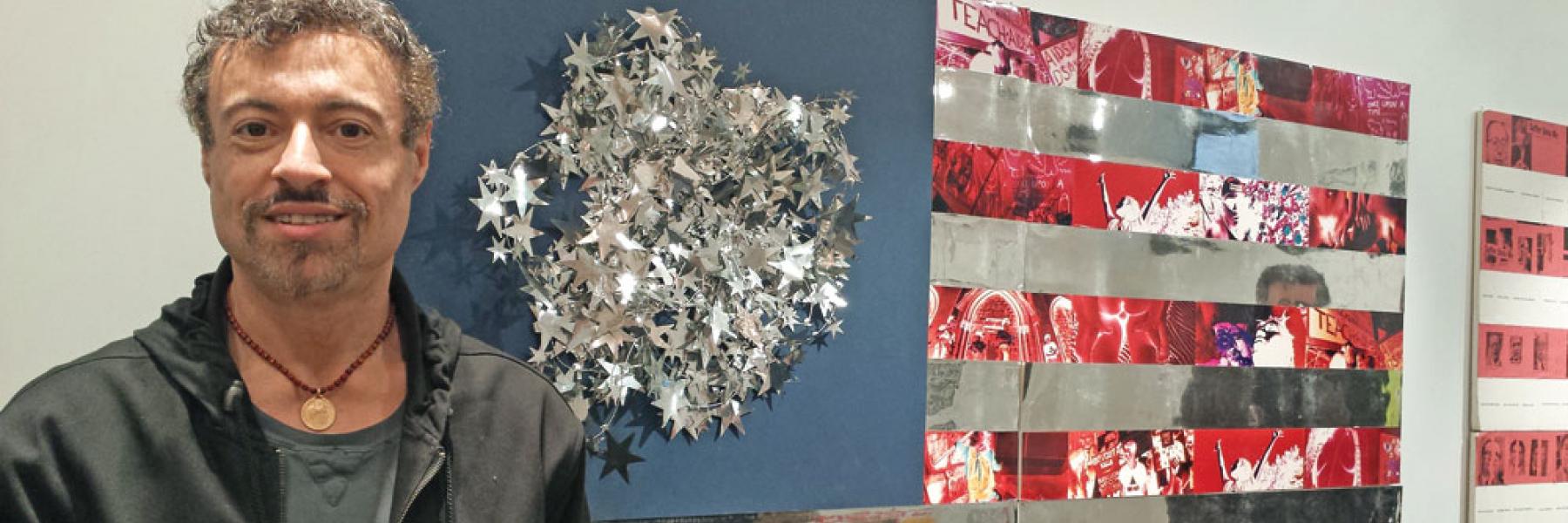
For nearly two decades, the archives of ART+ Positive languished in a basement in Cincinnati. The ACT UP affinity group was started in 1989 “to fight homophobia, AIDSphobia, and censorship in the arts.”
Meeting notes, posters, flyers, letters, and art remained out of the public eye until earlier this year when HIV specialist Daniel S. Berger persuaded the collector to let him acquire the archives. That collector, who purchased the archives in 1996, had intended to showcase the work and ephemera, but never did. In June, Dr. Berger, founder and medical director of Northstar Medical Center in Chicago, along with artist John Neff, curated the art show “Militant Eroticism: The ART+ Positive Archives.”
“Everyone went off the radar for 10 years,” said Hunter Reynolds, who co-founded ART+ Positive. “We finally got a connection to the guy, and Dan spent months talking to him. He didn’t return calls from others.”
It is fitting that Dr. Berger brought the archives back to life. He is both an art collector who runs a gallery as well as an M.D. who fresh out of medical school established Northstar at the start of the epidemic, renowned for aggressive action against the virus in times when little could be done.
“The artists of ART+ Positive expressed desperation, anger, and passion in a near hopeless situation,” said Dr. Berger. “They were trying to create change in a very homophobic and AIDS phobic society. These artists and other activists were my collaborators working towards common goals, allowing patients to become equal partners with their providers, determining treatment choices and gaining early access to promising investigational treatment to save lives.”
He has contacted museums and galleries around the country, and all have expressed interest in displaying the archives. He is also working on finding a permanent home for the material, but said it will only be donated to “the right institution that promises to display it, so that people can continue the discourse.” He sees that early resistance against negative societal forces as a power that continues today and unites many struggles, such as Black Lives Matter. “I just feel honored to be sheltering the archives right now,” Dr. Berger said.
“Demonstrate against Homophobia and Censorship,” reads a flyer for a protest at the Metropolitan Museum of Art in New York City. “Senator Jesse Helms has proposed legislation that would censor homoerotic art and could lead to the removal of much of the art in museums across America. Helms wants to tell us who to love, what kind of sex to have, and what ideas we can see and hear. Fight back! Demonstrate!”
“Buttfuckers United Against Censorship!” declares another flyer. “Love between men is as precious as any other kind of love. … Embrace homoeroticism! Speak out forcefully and honestly against this latest attempt to silence gay male expressions.”
Artwork in the exhibit included Equipped, photographs by Ray Navarro, first exhibited in the 1990 PS 122 exhibition An Army of Lovers: Combatting AIDS, Homophobia, and Censorship, in New York City. At the time, Navarro was sick and in the hospital, debilitated and blind due to AIDS complications. Artist Zoe Leonard assisted him in completing the work, depicting hospital equipment and using suggestive titles such as “Studwalk.” According to the exhibit’s website, “Equipped slyly mobilizes references to queer sex, AIDS medicine, and censored public speech.” Navarro died on the day Army of Lovers opened.
That so much art and other fragile materials such as letters survived may be as much a stroke of luck as it is due to the passion for history of all those who had it in their possession. Now, in the age of the Internet, the archives are being scanned and have a much greater chance of not only being saved for posterity, but of being seen.
View Militant eroticism at icebergchicago.com.


